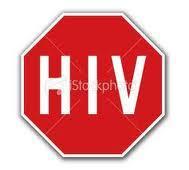Gilead Sciences Inc. (GILD)’s Viread pill reduced the risk of injected-drug users contracting the AIDS virus by half in a study in Thailand, a finding that may give public health officials a new weapon to fight HIV’s spread.
In a trial involving 2,413 HIV-negative drug users in Bangkok over five years, those who received Viread daily were 49 percent less likely to get infected with HIV than those who got a placebo, researchers from the Thai Ministry of Public Health and the U.S. Centers for Disease Control and Prevention reported today in the Lancet.
The findings confirm the results of earlier studies that show Foster City, California-based Gilead’s Viread and Truvada can prevent infections among people at risk of catching the virus, an approach called pre-exposure prophylaxis, or PrEP. Health officials are planning pilot programs to turn the promising study into a real-world public health intervention.
“In this population now we have an additional tool to help protect against HIV infection,” Michael Martin, a researcher with the Atlanta-based CDC who helped lead the trial, said in a telephone interview. “In some ways the work starts now to determine how PrEP can be effectively integrated into current strategies to reduce HIV infection around the world.”
Injected drug use is one of the main means of transmission of HIV in Eastern Europe and Central Asia, where new infections rose 7.7 percent from 2001 to 2011, defying a global downturn in the virus’s spread, according to the Joint United Nations Program on HIV/AIDS, or UNAIDS.
PrEP Studies
Previous studies have shown PrEP can help reduce the risk of HIV infection by 44 percent in gay and bisexual men, and by as much as 75 percent in heterosexual couples in which one member is infected. Another trial among heterosexual women in Africa failed because the women didn’t consistently take the pills. Today’s study is the first to show it also works for illicit drug users.
Participants in the trial were chosen at random to receive either Viread or placebo. Still, not everyone took the pill every day. Among those who did, the risk reduction was as much as 74 percent. Those who contracted HIV were referred for care to Thailand’s health system, while those who remained HIV negative are being offered Viread for another year.
Regular Testing
The participants received regular HIV testing, counseling, assessments of the riskiness of their behavior, condoms and home visits if they didn’t show up for an appointment, a level of support that drug users may not have outside of a trial, said Anthony Fauci, director of the U.S. National Institute of Allergy and Infectious Diseases.
“In the real world they’re not going to have the close following that they have when they’re in a study,” Fauci said in a telephone interview. “The important part about the study is that the proof-of-concept is clear. Now we’ve just got to do a better job of making sure we implement it in a way that you get an effective response outside a clinical trial.”
The U.S. Food and Drug Administration approved Truvada, a combination of Viread and another Gilead drug called Emtriva, almost a year ago for use by healthy heterosexual or homosexual people who are at high risk of being infected with HIV.
Drug users will need more than a daily pill to keep them from becoming infected, said Peter Godfrey-Faussett, UNAIDS’s senior science adviser.
“HIV is only one of the many threats to many injecting drug users’ daily lives,” he said in an e-mail. “On the other hand, additional effective prevention tools are very welcome. The challenge is how to build ‘prevention literacy’.”






